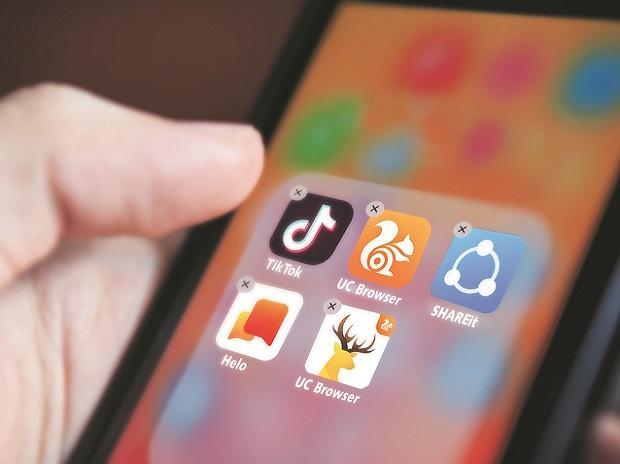Crises when timed perfectly can turn into some really big opportunities. And the present crises- H-1B visa suspension imposed by Trump administration and the Sino-India border confrontation have coincided to create a massive opportunity for India’s App market and the Information Technology (IT) sector.
US President Donald Trump issued an executive order last week. It suspended work visas and green cards too have been paused. H-1B visas (high-skilled workers) have been suspended till the end of 2020. This directly affects highly-qualified Indian IT professionals who are the brains behind some of the biggest American tech giants.
At the same time, Modi government has banned 59 Chinese apps, including some of the most popular ones- TikTok, CamScanner and SHAREit. India’s app market is suddenly faced with a vacuum. This is a temporary vacuum and IT professionals have a now or never opportunity to capitalise upon this vaccum.
As for the H-1B visa ban, it has always been on the US President Donald Trump’s agenda. The Trump administration argues that the H-1B visas are misused for importing cheap labour at the expense of more expensive local professionals.
Now, Presidential polls are around the corner, and economic slowdown and high unemployment within the US are the driving reasons behind the latest executive order.
As for the Chinese apps ban, it is a statement of intent from India to punish China for border aggression at the Line of Actual Control (LAC) in Eastern Ladakh. The stated reason maybe national security but it is really a defence move to cut China to size. Once, Beijing feels constrained to pull back its troops from LAC, the ban too might get eased.
The H-1B visa suspension is here to stay because the Coronavirus Pandemic has ravaged the American economy, and the issue of unemployment is more relevant than ever before. It could easily go beyond 2020 itself.
An entire generation of brilliant IT professionals from India currently stationed in the United States will be coming back to India. An upcoming harvest of innovators and professionals too are going to remain deprived of the H-1B visas. Indians receive nearly 70 per cent of the 85,000 H-1B visas issued every year by the US, which gives a rough idea of the kind of workforce that will stay back in India now.
This is one of those rare occasions when the Supply side (IT professionals) and Demand side (the Apps market) are going to align with each other perfectly, albeit for a transitionary phase.
The Chinese Apps ban is going to starve a massive market of 800 million smartphone users for content. Half of these users are below 25 years of age and hungry for mobile apps. India also has some of the lowest internet costs in the world to further complement the prolific Apps market.
Indian IT professionals like Sundar Pichai and Satya Nadella have fuelled the growth of American tech giants like Google and Microsoft, but now such top-notch IT experts in the upcoming generations will be driving the growth of Indian apps.
Apps like Chingari, which is touted as a substitute for China’s TikTok, have shot to fame overnight. It was launched in 2018 and had 6,00,000 users till very recently. But with hostile sentiment against China, and the ban on TikTok, the video-sharing app suddenly gained 2.5 million users in a matter of ten days. After the ban it gained 1,00,000 users in just an hour.
TikTok traffic has shifted to Chingari and Sumit Ghosh, the 34-year old co-founder of Chingari knows this is the time to make most of the changing dynamics. He has not slept in the last 48 hours as he wants to capitalise on an unprecedented opportunity coming his way.
TikTok is just the tip of the iceberg, indigenous substitutes have to be found for apps like SHAREit, CamScanner and UC Browser too. The Indian IT professionals are some of the best in their business around the world. They will deliver big.
And angel investors too have picked up the upcoming boom in India’s Apps market. They are going to fund the Indian Apps that will replace the banned Chinese Apps. In course of time, these Apps could go on to replace Chinese Apps in the global market too. Governments in countries like the US and Australia too would prefer Indian Apps to Chinese Apps.
INDIA STANDS APP
If you are building an Indian version of these apps, @naval and I want to see it. We have set up an email address at india.stands.app@protonmail.com
Please send us links to your working prototypes to try out (not decks!) https://t.co/Ldm8PRcvSG
— Balaji (@balajis) June 29, 2020
Things could fall in place for the Indian IT sector all over again. This sector has been the breeding ground of India’s new billionaires in the post-1991 era. It is true that the IT sector is not jobs-driven and its contribution to the GDP is disproportionately higher than its contribution to employment.
But IT sector is the one that at least partially absorbed the growing number of job-seekers fuelled by the country’s young demographic profile. After the global financial crisis however, there was a slowdown in IT sector growth. After 2014-15, growth in IT sector got flattened. India’s IT sector was staring at a slowdown.
However, the H-1B visa suspension and the Chinese Apps ban have carved out an opportunity out of thin air. This can easily translate into a second IT boom in the Indian economy, which will create more billionaires, trigger higher growth and create more employment opportunities for India’s highly trained IT workforce.
